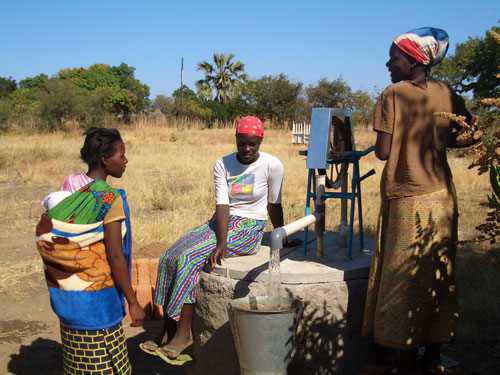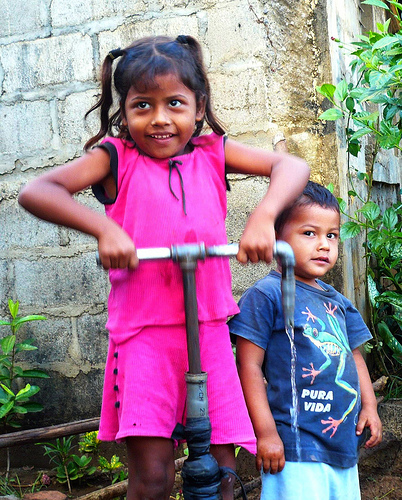Solution of the week 7
Contents
[hide]Why water pumps should be extremely repairable
Did I mean ‘reliable’? no. Not necessarily. It seems logical to demand that water pumps be reliable, right? Shouldn’t the goal be to make water pumps that are of such a good quality, that they don’t need any maintenance, and will never break down? Of course, this goal can never be reached because everything that moves breaks down eventually. But should we at least strive to make a pump that fails only after a very long time, say 10-15 years? Surprisingly, this seemingly logical idea has some unintended and potentially troublesome consequences.
As an example, consider one of the most common pumps in Africa, the Afridev pump. It is very durable, sturdy, breaks down only after 10 years or so. A very nice, well-designed pump. In all of Africa, some 30% of these pumps are broken today, in some countries 70%, and they are not being repaired. What happened? And let’s be clear: the problem is not that things break down, because everything breaks down eventually. The problem is that they are not being repaired.
Is reliable really reliable?
Hard-won experience by field experts shows that one of the main shortcomings of this type of pump is, counter intuitively, exactly the long time before maintenance or repair is necessary. Because they have to last a long time before failure or maintenance, they are heavy, sturdy, of high quality, and because they are so, they are expensive. Because of the high quality standard, the pumps are produced in countries that have the ability to do so, and need costly transport to their destination. The high costs of such pumps (typically about 1000$ or more) means that the pumps are communal, because no government, let alone villagers themselves, can pay for such a pump for each family. And here the Tragedy of the Commons raises its ugly head.
Say, you live in a village, which has a communal water pump. It was installed by some organization which you don’t quite remember about ten years ago, and it has worked fine ever since. At the time, you seem to recall, a water committee was formed which was supposed to collect money each month to cover the cost of maintenance and repairs, but after three years of good operation of the pump, this committee stopped its activities and the money was used for other purposes. Unfortunately, today the pump is broken, and needs an expensive repair with spare parts from the capital of the country. Who is going to pay? The problem is that high-quality communal pumps often just don’t fit the technology management capacity of a village.
Repairable pumps
Can we do better? Enter the idea of ‘repairability’. If you focus on repairability, the technology management capacity of people comes first. It is not a problem if a pump needs regular maintenance and repairs (within bounds of course, say, at most each 6 months), as long as maintenance and repairs are cheap, and can be carried out by the users themselves, a local caretaker or village technician. In fact, if regular maintenance and repairs are required, people will remember how to do it. Pumps that fall into this category are the rope pump and the EMAS hand pump.
Because such pumps must be repairable, it also means that they need to be light-weight, of simple construction, without any special spare parts. Local production means the pumps don’t need to cross borders, reducing costs. All these factors means such pumps can be made cheaply. Therefore, they become affordable for families, and then it is very clear who is going to pay when a repair comes along, and who should take good care of the pump to prevent damage. Fortunately, the repair will be affordable, because the pump was designed that way.
Studies in Nicaragua show that 95% of rope pumps stay in use after 5 years, because they are maintained by the users. In Bolivia, over 20.000 EMAS pumps are owned by single families, who paid for the pump themselves, without any subsidy.
Of course, you cannot expect the same level of service from a 10$ PVC pump, a 50$ rope pump, or a 1000$ Afridev pump. And if the water is really deep, there might be no alternative for a communal pump. But it would be good to start focusing on what reliability really means: things should be available, and therefore easy to fix. Simple and cheap water pumps aimed at single families to small groups of families have great advantages, and deserve a lot more attention then they are getting now.



